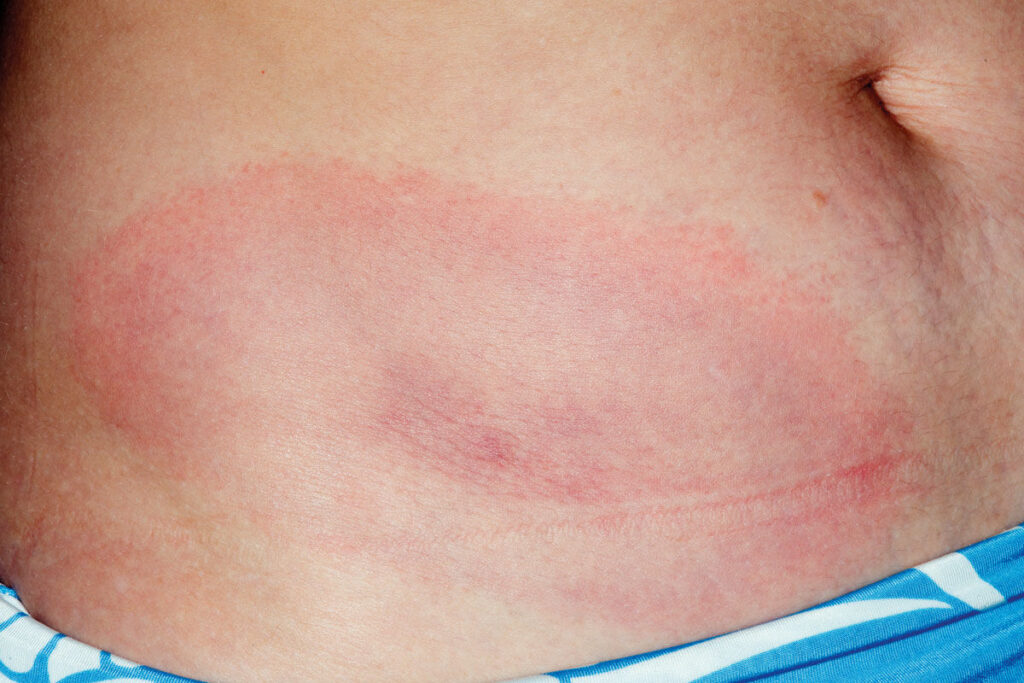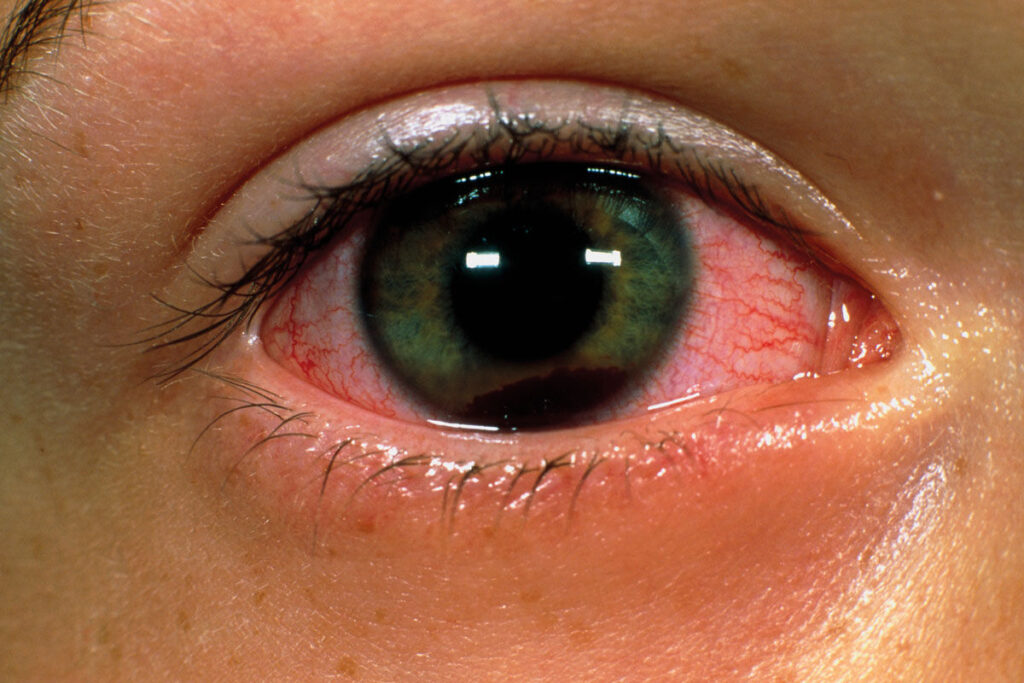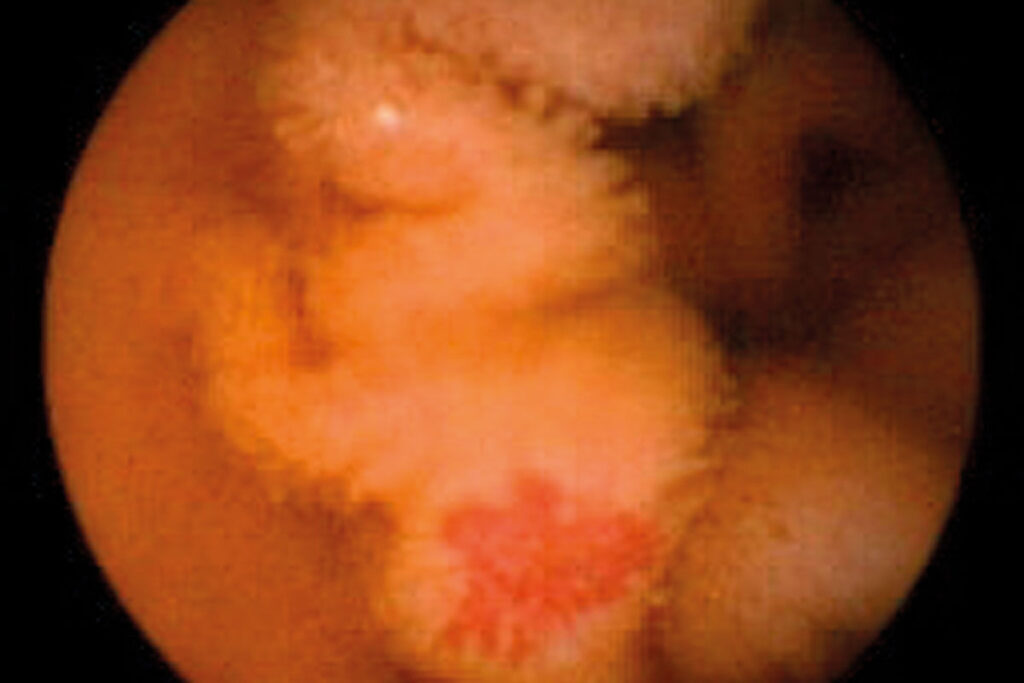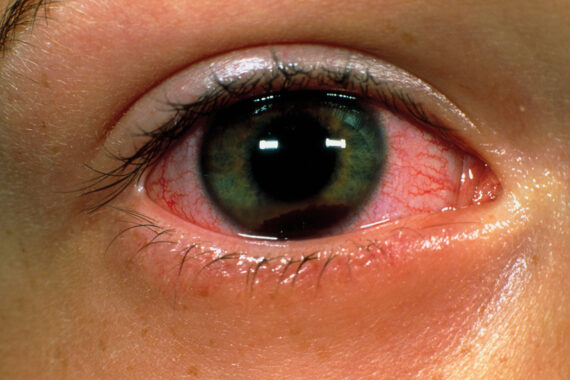What do these presentations involving an insect bite related rash, eye trauma and recurrent anaemia, add up to?
CASE EASY
The patient
A 32-year-old man with a history of asthma and hay fever, on salbutamol and beclomethasone dipropionate inhalers.
He says
‘I’ve got a really bad insect bite. I was at a friend’s house in the country 10 days ago in hot weather. We were lolling in the long grass after a barbecue and I guess I was bitten. I’m not sure if it’s an allergic reaction or an infection. It’s taken a week to come up.’
+

=
See end of article for answer
CASE MODERATE
The patient
A 30-year-old man with no relevant past medical history.
He says
‘I was playing squash at lunchtime and got the ball full in my eye. It hurt a lot and since then my vision has been a bit blurry. Now my eye looks very bloodshot and the coloured bit is odd.’
+

=
See end of article for answer
CASE HARD
The patient
A 64-year-old man with recurrent iron deficiency anaemia. Coeliac screen, gastroscopy, urinalysis and colonoscopy are negative. FIT tests are positive. He has no symptoms apart from tiredness when anaemic. His diet seems adequate and he is on no medication.
He says
‘I must have had every test. This time they got me to swallow a video capsule. Can you tell me what’s going on?’
+

=
See end of article for answer
Dr Keith Hopcroft is Pulse’s medical adviser and a GP in Basildon, Essex
Answers
EASY Erythema migrans This is the pathognomic rash of Lyme disease – caused by Borrelia burgdorferi and transmitted via a tick bite. The clues are the context and the characteristic ‘target’ appearance of the evolving rash – and also in the delay between the incident and the rash development (the typical insect bite reaction has a much quicker onset). Guidance advises treatment with antibiotics if the rash is present.
MODERATE Hyphaema This is blood in the anterior chamber of the eye, secondary to trauma. It causes the characteristic fluid level obscuring the lower part of the iris. This suggests significant ocular trauma and can lead to complications such as raised intraocular pressure. For this reason, the patient should be referred urgently to the duty ophthalmologist.
HARD Angiodysplasia of the small intestine Small bowel bleeding is the rarest form of GI bleeding, but needs to be considered when the cause of significant recurrent iron deficiency anaemia remains unclear after investigations. Capsular endoscopy may reveal angiodysplasia. This results in vascular abnormalities that can cause occult bleeding. Management strategies include coagulation and sclerotherapy.
Please note – these are all fictional cases and not based on any real patient interactions
Pulse October survey
Take our July 2025 survey to potentially win £1.000 worth of tokens














